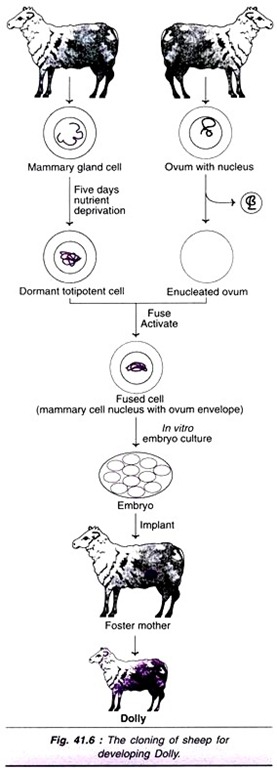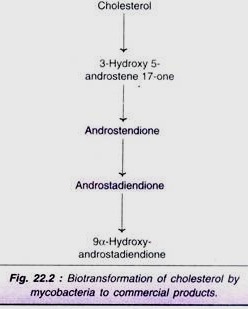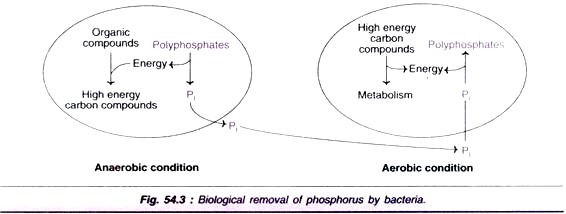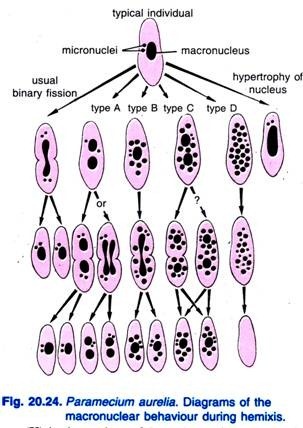ADVERTISEMENTS:
This article provides an overview on biodiversity and biomarker potential of soil fauna.
Introduction:
Biodiversity denotes the variety and variability of living organisms and refers to the unique characteristic of all organisms that no two individuals are identical.
According to Solbrig (2000) diversity is a property, not an entity in itself. This attribute, combined with natural selection, have produced the enormous biological variation existing today, which, in fact, represents only a small fraction of variation that existed through the course of evolution.
ADVERTISEMENTS:
Exploitation of natural habitats by burgeoning population is a serious threat to biodiversity, which benefits our life in several ways. Research in biodiversity can contribute to the conservation and sustained utilization of biological resources.
In other words, biodiversity studies give emphasis on a thorough systematic survey of germplasm and its proper use for the benefit of mankind. A debate is going on the ‘redundancy and keystone species viewpoints’. Many species are considered redundant in any habitat because of their apparently insignificant contributions when compared to the ecological services of a few keystone species.
It is argued that there will be no harm if some redundant species are lost from the habitat. But this is a dangerous attitude since we do not know the precise role of every species in the ecosystem; any species may gain or lose importance under certain environmental conditions. Evolution may favour the present day redundant species to become important in future.
Moreover, the significance of interactions among biota and their cumulative role in biogeochemical cycles cannot be ignored (Hagvar, 1998). The 1992 Rio-convention on biodiversity focused on the loss of biodiversity which if allowed to proceed unchecked, could well lead to elimination of even up to 50% of all the earth’s species (Myers, 1993). The Rio convention has defined 3 levels of biodiversity namely multitude of ecosystems, the number of species and the genetic variation within each species.
ADVERTISEMENTS:
There are 3 Major Biotic Frontiers on this Planet:
1. The tropical forest canopy with an extrapolated figure of about 30 million arthropod species (Erwin, 1983).
2. The deep-sea benthic biota with a projected figure of more than 10 million invertebrate species (Grassle, 1989).
3. The soil biota (largely unestimated) with an anticipated figure of more than 10 million invertebrate species (Andre, et al, 1994).
Biodiversity in Soil:
The biodiversity in soil includes all major groups of bacteria, fungi, algae and most of the animal phyla (Lee, 1994). According to Hagvar (1998) one gram of forest soil may contain 4,000 different microbial genomes. One square meter of forest soil may contain up to 1,000 species of invertebrates with more than 200 species of arthropods.
There may be as many as 1,000 species of nematodes, 115 species of termites and 275 species of ants in the soil-of a single tropical rain forest in Peru (Wilson, 1992). Density wise also the soil biota surpass the number of organisms in any other system. A handful of fertile soil contains billions of microbes, millions of protozoan, thousands of nematodes, hundreds of enchytraeid worms, mites, collembolans, few earthworms, isopods, millipedes, centipedes, spiders, beetles, gastropods, etc., (Wallwork, 1976).
The huge density and diversity of soil biota, however, is very fragile and highly susceptible to anthropogenic factors, which often affects them beyond the scope of restoration. According to Hagvar (1998) the general arguments—namely ethical, utilitarian and ecological services can be also used for the conservation of soil biodiversity. Soil biota can be divided into 3 guilds: Root biota involving bacteria, mycorrhizae and root herbivores; Decomposers — involving bacteria, fungi, micro and meso fauna that utilize the dead organic matter; Ecosystem engineers—involving meso and macro fauna that create microhabitats for others by reworking soil (Brussaard, 1998).
Soil Arthropod Fauna as Biomarkers:
A remarkably varied faunal community exists in soil of which phylum Arthropoda represents the most abundant group in terms of density, diversity and trophic levels. Majority of them are detritivores and their ecological services include mechanical and chemical breakdown of dead organic matter, promotion of growth and distribution of microbes, enhancement of humus formation and food web relations with other soil biota. Pioneer scientists have proposed the applied importance of soil arthropods as bio-indicators of soil properties, agricultural practices, soil pollution, etc. Predominant groups like Acari and Collembola are very sensitive to ecological parameters and are, therefore, successfully employed as biomarkers in soil health assessment (Calow, 1993).
The term biomarker is defined as ‘the biological response to a chemical or chemicals that gives a measure of exposure and sometimes, also of the toxic effect’ (Peakall, 1994). Accordingly, the biological responses that could be considered as biomarkers range from the molecular, to effects on that organism, the population or community and, perhaps, also the structure and function of ecosystem. This paper attempts to review the biomarker potential of soil micro arthropod fauna on the basis of elaborate experiments conducted in this laboratory.
Materials and Methods:
ADVERTISEMENTS:
Long-term ecological studies were undertaken in local afforested sites, natural and controlled field conditions, agricultural fields, etc. to compare the density, diversity, community structure, population fluctuation and prey-predator ratio of soil arthropods and to evaluate their potential in environmental health assessment. Random soil and litter samples were collected from the study sites at regular intervals to extract the micro arthropod fauna with the help of a battery of ‘Tullgren funnels’.
These were sorted out into major taxonomic and trophic categories and cryptostigmatid mites were identified up to species level. In the afforested area, monoculture tree stands were earmarked to study the seasonal community structure and population fluctuation of micro arthropods, with special reference to Acacia auriculiformis, Cassia siamea and Shorea robusta that are being used for soil conservation in the locality.
In another study, the micro arthropod faunal characteristics and diversity indices were compared at monthly intervals under diverse sites like eroded wasteland, paddy field, fodder field and grassland. In the controlled field condition senescent leaf litter of several tree species were subjected to decomposition in large earthenware pits inserted into the soil to study the colonization and faunal diversity of micro arthropods at monthly intervals.
In the agricultural field, the possible ill-effect of pesticides namely heptachlor 20EC and endosulfan 35EC on non-target soil micro arthropods were compared at fortnightly intervals against untreated control plots. After extraction of micro arthropods the soil samples were processed for important physicochemical analysis.
ADVERTISEMENTS:
Simultaneously, fresh soil samples were used for the estimation of microbial enzyme activity following standard methods. The results were analyzed using appropriate statistical techniques. Details regarding all these experiments are given in earlier publications.
RESULTS:
Soil Arthropods and Litter Decomposition:
The capacity of micro arthropods to migrate and utilize the resources in decomposing leaf litter was evident within one month of the pit experiment. The cumulative density of micro arthropod fauna was high in Casuarina equisetifolia and Tectona grandis litter but low in Acacia auriculiformis and Shorea robusta litter (Table 1).
It seems that rich nutrient status and wide range of niche patterns in detritus facilitated high diversity in several litter types. Collembola constituted bulk of the fauna in all the litter types. Detritivores outnumbered other trophic levels as evident from the density of Collembola, Cryptostigmata, Psocoptera, Isopoda, Diplopoda, etc.
The availability of sufficient nutrients for growth and reproduction was also evident from the high number of unidentified Acari juveniles. Presence of a large number of species was noticed in groups like Collembola, Cryptostigmata, Protigmata, Mesostigmata, Coleoptera, etc. The overall faunal diversity was low in Shorea litter whereas Casuarina and Cassia siamea could provide resources for enhanced diversity.
ADVERTISEMENTS:
An approximate trophic categorization was possible on the basis of known feeding habit of major groups. Groups like Prostigmata, Hymenoptera, Coleoptera, Hemiptera, Dermaptera, Chilopoda, Araneae existed in the litter as predators. Cassia litter with high predator population also had higher faunal diversity whereas Tectona and Acacia litter with low predator percentage had lower faunal diversity.
Soil Arthropod Fauna in Afforested Sites:
Seasonal estimations of micro arthropod community and physicochemical properties of soil were made for two consecutive years in the forest stands of Cassia siamea, Acacia auriculiformis and Shorea Robusta. Table 2 gives a comparison of the average density of micro arthropod groups in the afforested sites with that of an adjacent eroded wasteland.
The population was highest in the soil under Cassia trees, very low in Shorea stand and negligible in the eroded barren area. Acari predominated over Colembola in all the sites. Among the three afforested sites the population of Acari and Collembola were more in the soil of Cassia trees. Juveniles comprised the bulk of Acari population in all the sites, which demonstrated their reproductive potential and the availability of sufficient nutrients.
ADVERTISEMENTS:
The seasonal pattern of distribution showed the general trend of high density during rainy season and very low population during summer. However, the high density of Acari juveniles in the soil of Cassia and Shorea trees during summer is indicative of improved edaphic quality. This was also evident from the more or less uniform density of soil micro arthropods in the Cassia stand irrespective of the seasons, which indicates ecological stability of the system.
Improved Edaphic Quality in Afforested Sites:
Table 3 depicts an overall comparison of the edaphic parameters, micro arthropod density and microbial enzyme activity in the soil of Cassia, Acacia and Shorea stands. Afforestation resulted into notable improvement of physical and chemical characteristics of soil over the values in the barren area.
Among the three sites, the soil of Cassia showed remarkable improvement in physicochemical qualities than in Acacia and Shorea stands. This could be correlated with the total microarthropod population and with the density of detritivore groups like Acari and Collembola. Microbial activity in soil is a potential index of detritus energy and in the present study the activity of exoenzymes namely amylase, cellulase and invertase were more in the afforested sites.
Therefore, it can be said that Cassia litter is a good source for enhancing the ecological qualities and diversity in soil. Soil detritivores are the ‘key’ for mobilization of nutrients ‘locked’ in microbial and higher plant tissues.
Community Structure of Soil Arthropods:
The community composition of soil arthropod fauna provides some basic qualitative information on ecological functioning. Table 4 shows the population density and relative abundance of Acari and Collembola among diverse ecosystems. In all the sites these two groups constituted more than 80% of total microarthropod population.
ADVERTISEMENTS:
Their density was highest in orchard followed by fodder field and very low in paddy field and wasteland site. Among the sites, the relative abundance of Acari was more in the fodder field whereas that of Collembola was more in the orchard field.
The local variations in edaphic characteristics produced differences in the density and relative abundance of microarthropod groups. This was evident in the paddy field which represents a highly disturbed agricultural system and in the eroded wasteland area with poor soil fertility status.
Biodiversity of Soil Cryptostigmata:
The faunal characteristics of soil cryptostigmatid mites in ecologically contrasting sites is summarized in Table 5. The relative abundance of Cryptostigmata with respect to total micro arthropods and total Acari was highest in the grassland and lowest in the paddy field. On the other hand, taxonomic diversity was more in the fodder field and here also paddy field was the poorest.
There were eight species with relative abundance more than 5% in the forest soil while only two were dominant in the paddy field. However, the dominance index, which depicts the concentration of influence on two most dominant species, was highest in the paddy field.
ADVERTISEMENTS:
On the contrary, the species richness index and species diversity index of cryptostigmatid mites were more in the forest soil. Greater niche availability can lead to the presence of more number of species. It may be pointed out that higher species diversity is indicative of resource partitioning among individuals of many species, whereas higher dominance index shows the harshness of environment.
Impact of Pesticides on Soil Arthropod Fauna:
A long-term field experiment was conducted to evaluate the possible ill-effects of pesticides on non-target micro arthropod population. The population recorded prior to the pesticide application was more or less uniform in all the plots. But their density decreased within a fortnight after application of heptachlor 20EC and endosulfan 35EC showing drastic ill effect.
The cumulative density of major groups summarized in Table 6 shows that both pesticides are harmful to soil micro arthropods. Among major groups the ill- effect was prominent on Acari and Collembola. Heptachlor showed broad-spectrum toxicity while endosulfan was more harmful to soil Acari. In wheat crop the Collembola population could overcome the ill effect of endosulfan and increased to a very high level when compared to the untreated control plot.





